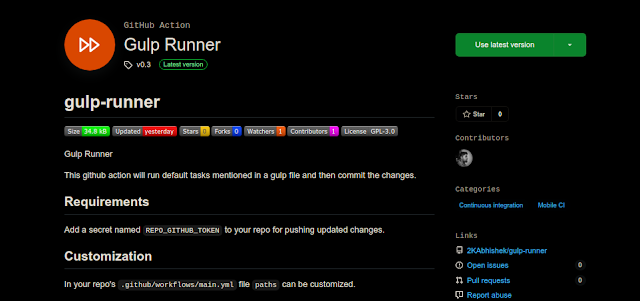Dipping My Toes Into Github Actions 🤖🏭

Hello Github Actions GitHub actions are something that I was always curious about but never really explored, recently I took a dive and was able to come up with something that actually solves one of my problems. Gulp Runner on GitHub Actions Marketplace Gulp Runner Like many of us, I have a portfolio site deployed on GitHub Pages. 🌐 It uses SCSS so I have to convert it to CSS pre-deployment, I also like to have my scripts and styles minified. While building the site I used gulp for these tasks and everything worked as it should. The only issue is when I have to make some quick updates to the styles or scripts on a new machine or on my phone, I have to setup the local dev environment along with node, npm and lots of node modules. While reading up on GitHub actions this is the problem that came up to my mind, that can be fixed quite easily using a simple workflow. 🤔 What this action does is, on push events it looks at changes in the script and styles file. If it does find any changes


